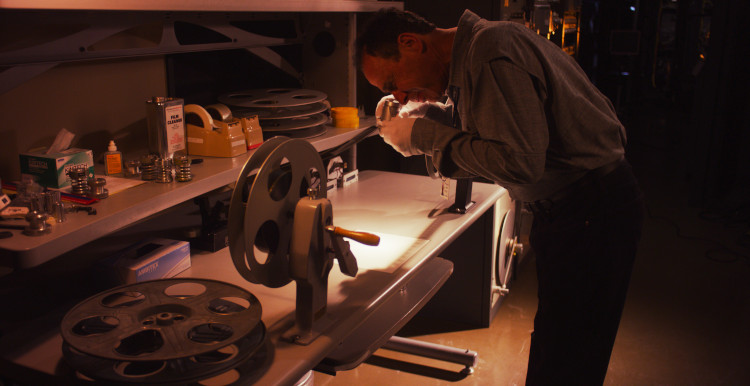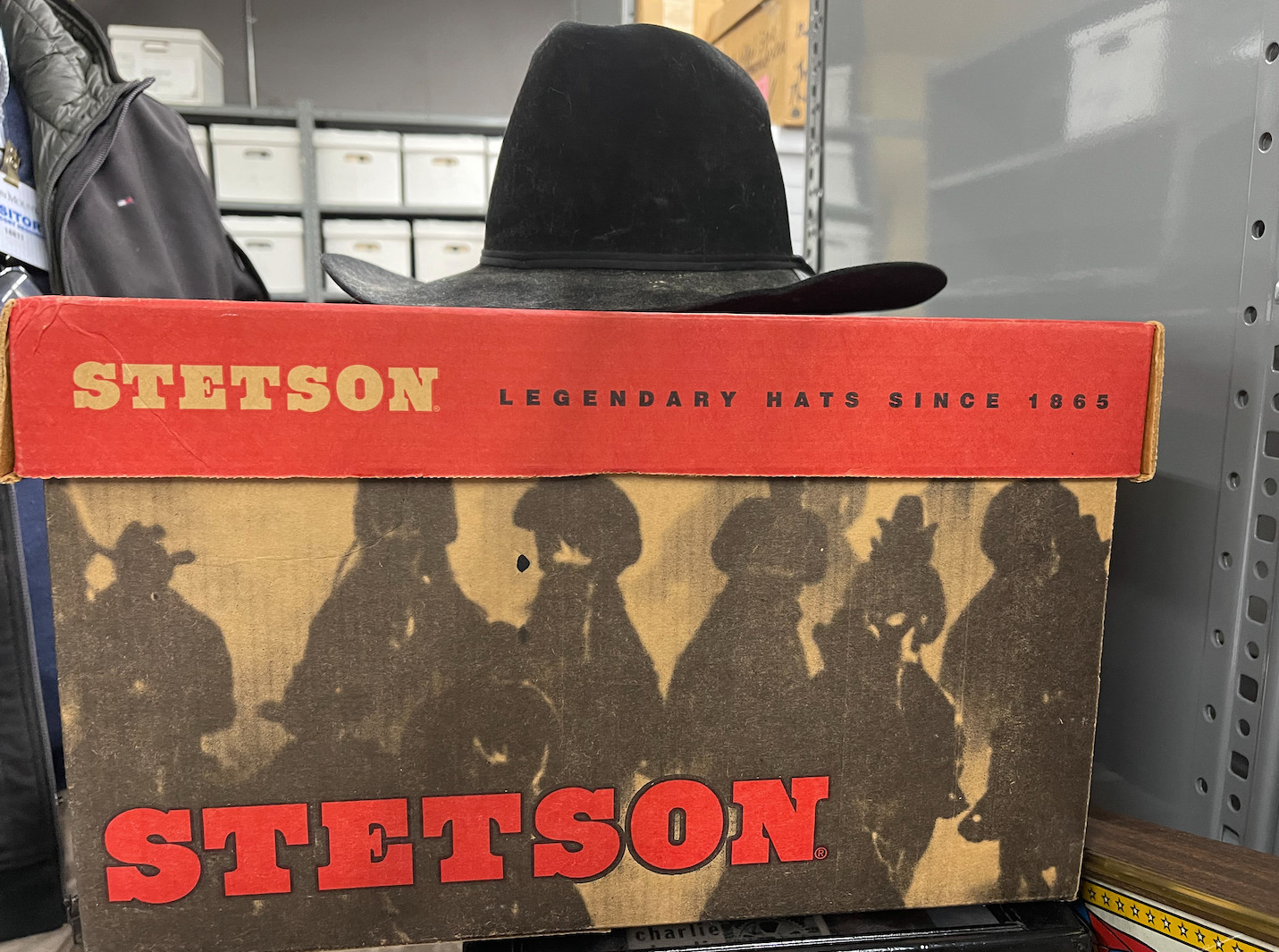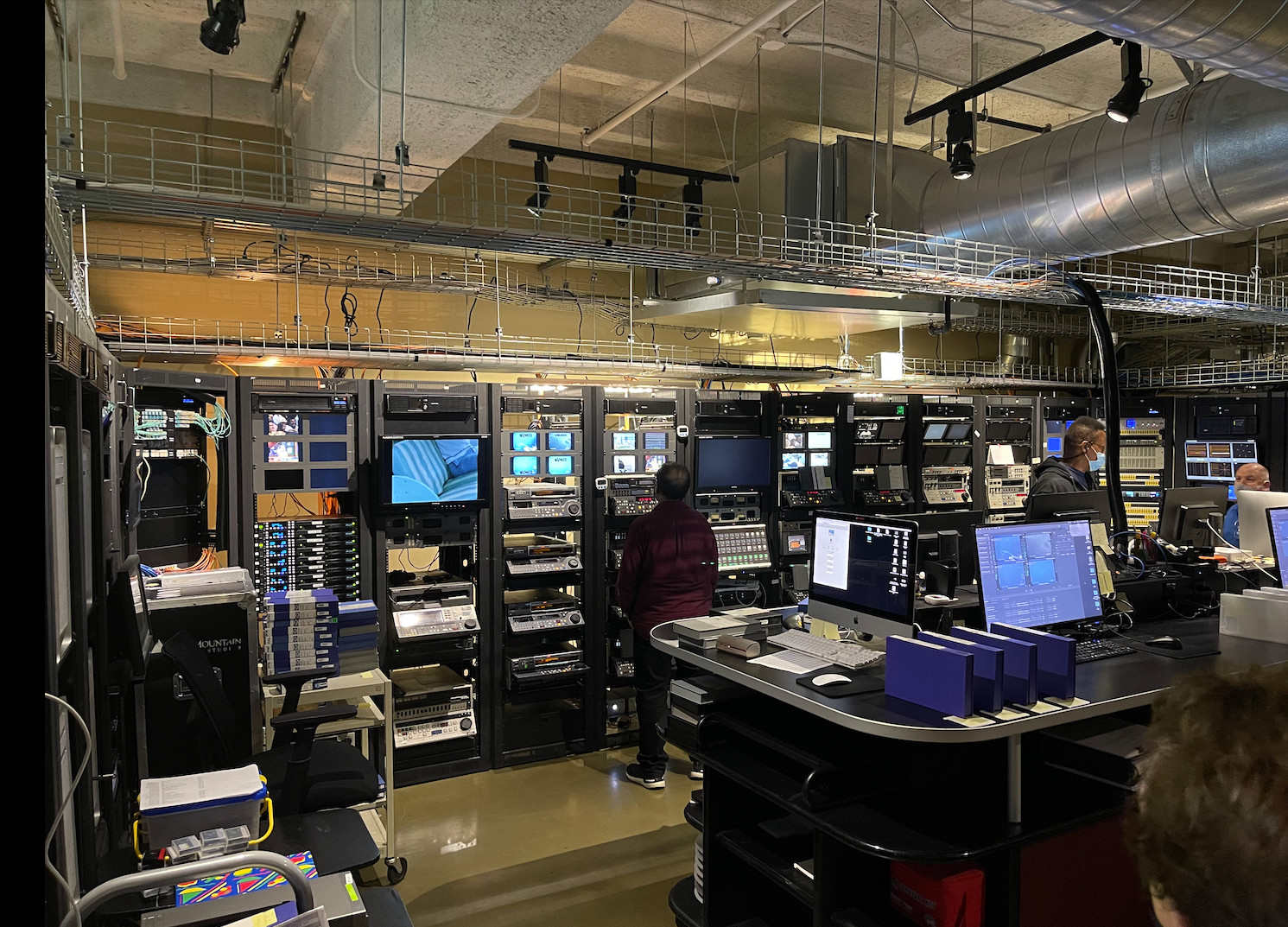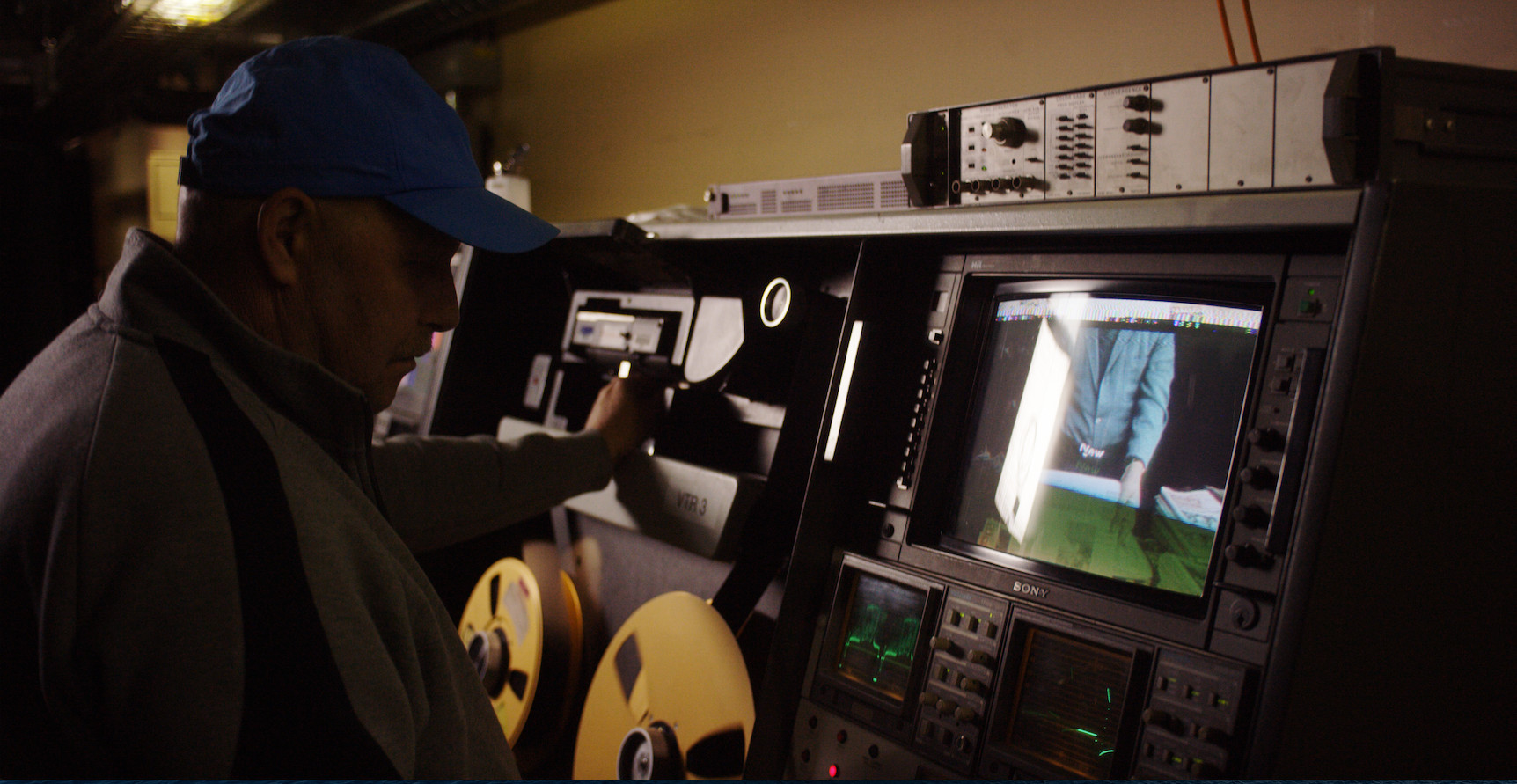Iron Mountain’s Hollywood Treasures
Where film/TV history is secure, current

HOLLYWOOD—Gary Cooper’s Stetson hats for High Noon, Lucille Ball’s home movies, vintage Disney cels and Norma Jean Baker’s orphanage documents. What they all have in common is that they are safe and sound in Iron Mountain Entertainment Service’s temperature-controlled, ultra-secure Hollywood facility. Founded in 1951 and headquartered in Boston, the publicly traded Iron Mountain is well known as a global provider of information and storage services.

What’s less well known is how Iron Mountain Entertainment Service’s Hollywood facility currently houses a significant repository of assets from the industry’s theatrical and TV production history in a building it acquired in 1988. The company opened its doors, protected by multiple layers of security, to TV Tech to show just how deep and comprehensive its media & entertainment archives and services are.
EARTHQUAKE RESISTANT
Fitting for an archival facility, the Hollywood site is a 100-year-old, 15-storey building that started as a bank and still boasts the artisanal details of the era and thick cement walls, reported facility/operational manager Steve Ricotta, who added that the foundation goes down to bedrock and its pyramidal form increases its resistance to earthquakes. Current safety and security measures include a dry pipe system, a smoke evacuation system, ubiquitous cameras and a full power backup generator that takes seven seconds to activate. Common areas are kept at 67-degrees and temperatures in the private vaults are determined by the content owners.
USC’s Cinematic Arts Library has 400 collections of Hollywood notables there, according to director Steve Hanson, including those of James Bridges, Ridley Scott, Jeffrey Katzenberg, George Lucas, Brandon Tartikoff, and Jack Larson. Most but not all of the collections are physical: posters and billboards, documents and memorabilia, including a Stetson hat box housing Cooper’s white and black cowboy hats; early Disney cels, a framed monkey wrench from Charlie Chaplin’s Modern Times and orphanage paperwork admitting Norma Jean Baker (Marilyn Monroe).
“People travel from all over the world in researching documents from the collection,” said Hanson, who added that one of the oddest details is the type and amount of alcohol consumed during the making of Casablanca.
Ricotta reported that the Iron Mountain Entertainment Service's facility has preserved collections from studios, production companies and networks, including HBO, the Bob Dylan Archive, Discovery and Trans World Entertainment, the L.A. Lakers and San Francisco Giants, Corbis Images, The Grammy Museum and The John F. Kennedy Presidential Library.
DIGITAL ASSET MANAGEMENT
In addition to storing, protecting and remediating physical assets, Iron Mountain Entertainment Services offers digital archive and media asset management as well as digitization and digital media services that include analog/digital conversion, content localization, 3D object scanning and media transcoding.
Get the TV Tech Newsletter
The professional video industry's #1 source for news, trends and product and tech information. Sign up below.
According to the company’s global head of marketing Meg Travis, the entertainment services division started 40 years ago and went digital in 2007 with the acquisition of Xepa Digital, which specialized in the conversion of analog and obsolete digital audio/videotapes to high resolution digital file formats for archiving and distribution. At the time of the acquisition, Iron Mountain Entertainment Services preserved more than six million analog audio tapes; the acquisition of Xepa allowed the company to dramatically expand their services for media and entertainment industry companies.

Digital Studio Manager Kristine Hernandez gave a tour of the imaging room, which was designed to comply with guidelines from the Federal Agencies Digital Initiative (FADGI). There, imaging archivist Bethany Boarts described how technicians trained in Library of Congress archival best practices create high-resolution 2D digital scans (including stills from the Lucie Arnaz/Lucille Ball collection). Boarts, whose team works together with film/TV archivist Hillary Howell, reported that they add metadata and distribute the digital files per the clients’ instructions; the images are stored as RAW files.
Iron Mountain Entertainment Services is also developing 3D capture and rendering technology, powered by an Artec 3D scanner and a Corsair Geforce RTX. Hernandez stated that they are also piloting a high-speed automated method to capture all six sides of a tape box, with images searchable by metadata terms. “Scanning is a big focus, so clients can see their assets remotely,” said Travis, who adds that COVID-19 increased the number of clients who wanted that service.
The company, with the Association of Moving Images Archivists (AMIA), Audio Engineering Society (AES) and the Recording Academy, is creating an apprenticeship program to draw more people into this highly specialized field.
The Digital Studio also maintains a collection of machines that can playback obsolete formats, enabling transfer of old content into digital file formats. Videotape Operator lead Robert Sheafer heads the team that is continually repairing banks of ¾-inch U-matic, quad 2-inch and 1-inch Type C for transfer.
“We clean the heads frequently,” he said. “But sometimes we get only one pass at transferring [old tapes].” They also transfer from old tape formats such as DLT and computer data from the 1960s and 1970s. He added that the team acquires the machines to transfer whatever clients bring in and that they sometimes rebuild old operating systems. Hernandez says they scour auctions and eBay for old format machines. The digital studio also has seven suites running audio transfers and houses the only working 3M Digital 32 Track Recorder west of the Mississippi.

The studio can handle Super 8mm, 16mm and 35mm and transfer up to 2K with a Laser Graphics scan station (Iron Mountain’s Inglewood facility can scan to 4K). The Digital Studio also houses a cloud upload service, featuring a 10GB pipe and fiber network. Although the studio’s rooms are filled with a hodgepodge of vintage machines, the operation runs very smoothly. Hernandez reported that they can process 200 program hours in a day, 4,000 in a month. With the booming demand for content and an ever-growing number of platforms, said Travis, “archiving is becoming the silent hero of the content race.”
CLOUD AND SECURITY
Iron Mountain Entertainment Service’s data center, which also houses its Smart Vault technology and a bank of Oracle Sun Microsystems servers, is comprised of 1.8 petabytes for the digital studio, with 81 terabytes for transfer of digital files from Iron Mountain to clients. A cloud upload service features a 10GB pipe and fiber network.
Director of Global Client Solutions Gregory Maratea described the company’s Smart Vault offering, which was architected to offer top cybersecurity measures. “We have weekly vulnerability tests,” he said. “We also have 17-day penetration tests and the software layers are proprietary.” Users represent a growing number of entities that have moved to online streaming during COVID-19, he said. Among the tools, they can preview files with a series of thumbnails for video ingest; they can also edit metadata and put assets in a cart to work with later or make an order.
Maratea pointed out that one benefit of using Smart Vault over a cloud service is lower retrieval fees, based on subscription, tiered and customized models.
“We also cut through the complexity level of getting started in the cloud,” he said. “We enable complexity without months of prep.” Users can actually see their assets in person, at the Hollywood site as well as the underground storage facility in Pennsylvania and another in Paris. “It’s the most secure digital storage available,” said Travis.
“The people who built this are security-first,” agreed Maratea. “We’re not experimenting and Iron Mountain isn’t going away.”
Debra Kaufman has written articles on technology in the media & entertainment industry for numerous publications. She is a former writer for the Entertainment Technology Center @ USC’s daily newsletter ETCentric.org, and writes for American Cinematographer, International Cinematographer, Digital Video, HPA Newsline and others. She also has moderated panels and public interviews at NAB, CES, Produced By, HPA, Editor's Lounge and other events.

